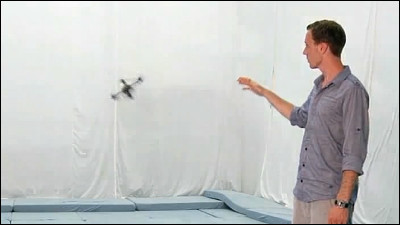The world's first drone 'transport of organs for transplantation' succeeds

Delivery of luggage by drone has already been put to
University of Maryland Medical School of Medicine and Engineering First to Use Unmanned Aircraft to Successfully Delivered Kidney for Transplant at University of Maryland Medical Center |
https://www.umms.org/ummc/news/2019/pioneering-breakthrough-unmanned-aircraft
First drone delivery of a donated kidney end with successful transplant-CNN
https://edition.cnn.com/2019/05/01/health/drone-organ-transplant-bn-trnd/index.html
Great team effort, with Dr. Joe Scalea as our Fearless Ideas Leader! NEXT !!! https://t.co/w5qhVaRWyL
— UMD UAS Test Site (@UMDUAStest) April 27, 2019
The successful delivery of organs for transplantation is the drone 'HOMAL' developed by the University of Maryland and the University of Maryland Medical College. HOMAL is an abbreviation of “Human Organ Monitoring and Quality Assurance Apparatus for Long-Distance Travel (Human Body Organ Monitoring and Quality Maintenance Device for Long Distance Transfer)”, and includes temperature, pressure and height as well as aircraft height and GPS information.・ We have function to record detailed data such as vibration at any time and send to smartphone of organ transplant person in hospital through wireless mesh network.
In addition, as a safety measure, it is equipped with a backup propeller and motor, spare battery and parachute.
You can see the following movie to see how drone transports organs for transplantation.
University of Maryland Unmanned Aircraft Used to Complete Kidney Transplant-YouTube
The movie begins with the staff preparing for transportation in the hospital. One of the staff has a controller for maneuvering the drone.

At the drone launch site in western Baltimore, Maryland, a drone is waiting at the side of the temporary communications base vehicle.

In anticipation of 'Let's get ready for launch, let's make history', the propeller of the drone 'HOMAL' raised its bell and started to rotate, and the aircraft began to rise.

The drone camera shows a transport container attached to the airframe and the ground moving further and further away.

The drone seen from the ground looks like this.

A drone carrying organs while looking under the night city.

There is a smile on the face of the

The drone flies about 2.8 miles (about 4.5 km) in about 10 minutes and then arrives at the destination.

The staff rushed to the drone while cheering.

A monitor attached to the drone container indicated that the temperature of the organ was firmly maintained at 0 degrees.

The drone was immediately brought into the hospital.

Joseph Scalea Associate Professor of Maryland Medical University, who was directing the project, thumps up for the camera.

'The success of this project is a big step in revolutionizing organ transport,' he said.

Transport of organs by drone 'HOMAL' was carried out on April 19, 2019 and delivered the kidney to Trina Grispy, a 44-year-old patient with kidney disease who has been on dialysis for 8 years. The transplant operation was successful and Mr. Grispy was discharged on April 23, 2019.
According to a survey of the National Organ Distribution Network, about 4% of organs previously provided for transplantation have been delayed for more than 2 hours, and about 1.5% have not been able to reach their original destination Toto. Regarding the success of this project, Daryl Pines, Dean of the University of Maryland Faculty of Engineering, said, 'It is technically significant, but it is more valuable in terms of saving lives,' and says He indicated that he would make a major contribution to development.
Related Posts:







